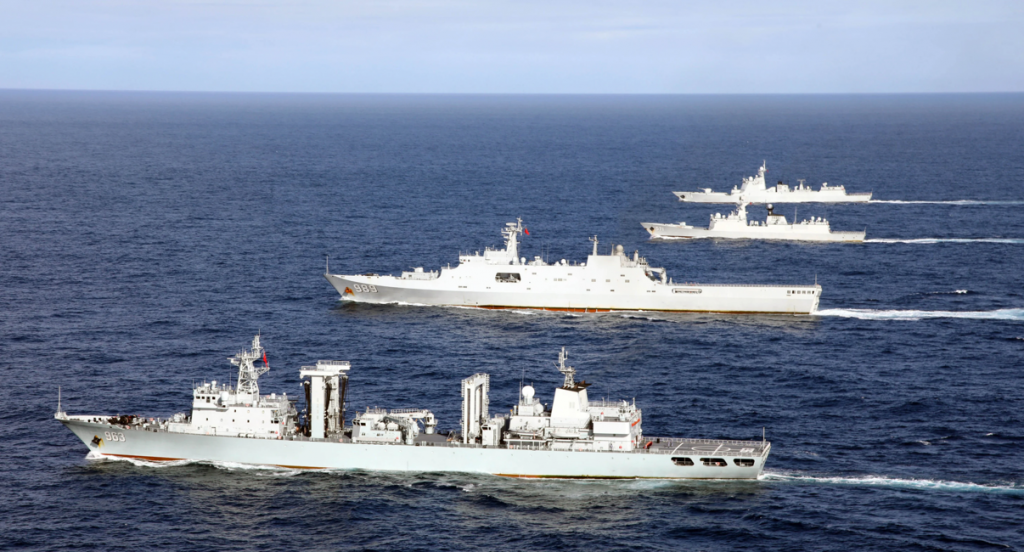China is looking to accelerate its naval shipbuilding program with the help of artificial intelligence (AI), potentially cementing its lead over the United States.
According to a report in the South China Morning Post, a research team from the China Ship Design and Research Center recently used AI to design a warship’s electrical systems in just one day, a task that would have taken human designers 300 days to complete using traditional computer tools.
The AI completed 400 tasks with 100% accuracy, according to senior engineer Luo Wei, who added that although the system had areas for improvement, it could accelerate China’s shipbuilding program. The technology works by consulting a database of Chinese ship designs from past decades and developing a design that is checked against the database, reducing computing resources and eliminating errors.

The AI project was military-funded, as the design process was the main obstacle to speeding up warship production rather than shipyard capacity. However, China’s massive shipbuilding capacity has already contributed to having the world’s largest navy, with 340 ships compared to the US’s 280 as of 2022.
The technology could further cement China’s shipbuilding lead over the US, as the latter cannot match China’s output due to the capacity of its 13 naval shipyards, each of which has more capacity than all seven US naval shipyards combined.
China has also been using AI to design weapons other than warships. In March 2022, it was reported that China had developed AI that could independently design hypersonic weapons. The AI tool for designing hypersonic weapons could assist researchers in developing new designs that can fly faster and are even more difficult to intercept than current models.
However, the increasing use and weaponization of AI may have unforeseen consequences, including the risk of overreliance on the technology leading to “flash wars,” where unmanned systems from opposing sides react against each other, leading to an uncontrolled chain reaction of escalation.

Apart from weapons, China has been applying AI technology to strategic capabilities, including turning commercial imaging satellites into spy satellites. For example, its AI upgrade to the low-cost civilian Jilin-1 satellite achieved a 95% precision rate compared to 14% for traditional satellite AI in analyzing small objects such as planes in the air or cars on the street. The country has also upgraded its Beijing-3 commercial imaging satellite with AI, allowing it to perform an in-depth scan of San Francisco in 42 seconds, producing images clear enough that military vehicles on the streets and the weapons they carried could be identified.
China is also using AI to shape its operational environment in the physical and cognitive domains. Recently, Asia Times reported on China’s use of AI to gain a decisive edge in the South China Sea. Its AI developed an extensive logistics network in the contested body of water.

In addition to weapons and capabilities, AI plays a crucial role in China’s military strategy. It aims to become a leader in “intelligent warfare,” exploiting the military edge offered by technologies such as AI, cloud computing, Big Data analytics, and cyber offense and defense. This strategy assumes that the side that can outsmart the enemy without a fight will prevail. China’s “intelligentized warfare” concept emphasizes the seizure of the information domain to deter or manage a conflict by depriving adversaries of access to information.
However, the use of AI in weaponry has raised concerns due to the potential for unintended consequences.
Branka Marijian, writing for Scientific American in 2022, pointed out that AI systems in weapons are still developing and prone to errors, and it is unclear how they make decisions. In addition, biases held by the creators of AI could also result in targeting specific groups of people, and a rush to deploy immature technology in an AI arms race could lead to unintended consequences.

Furthermore, the overreliance on AI could result in “flash wars,” where unmanned systems from opposing sides react against each other and cause an uncontrolled chain reaction of escalation. Flash war triggers, such as unavoidable incidents and accidents, can spark an escalation that can reach catastrophic proportions before humans can intervene.
Despite these concerns, there is reluctance among states to regulate the use of AI as they do not want to lose any military advantage provided by the technology.


